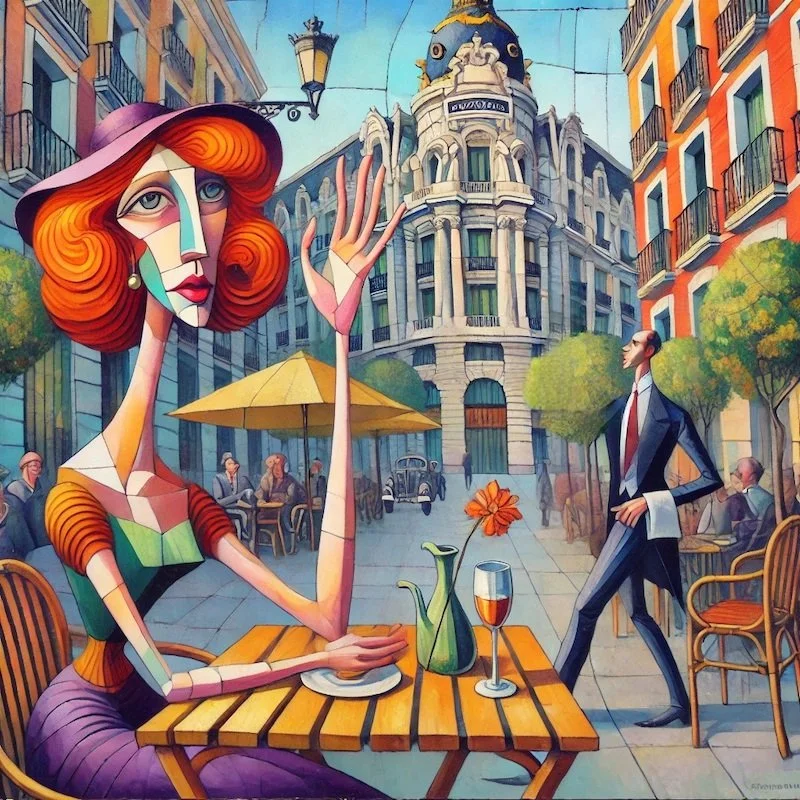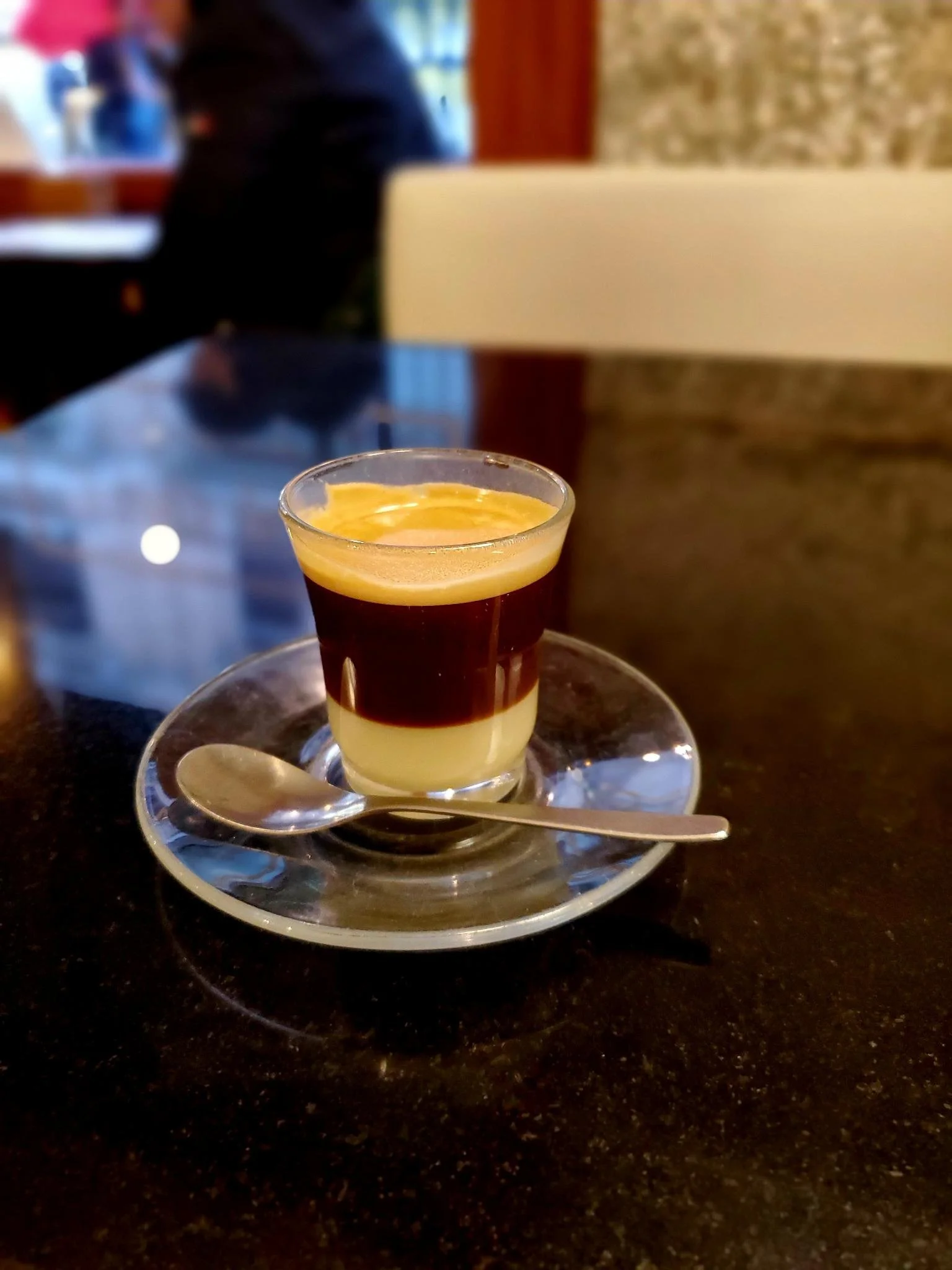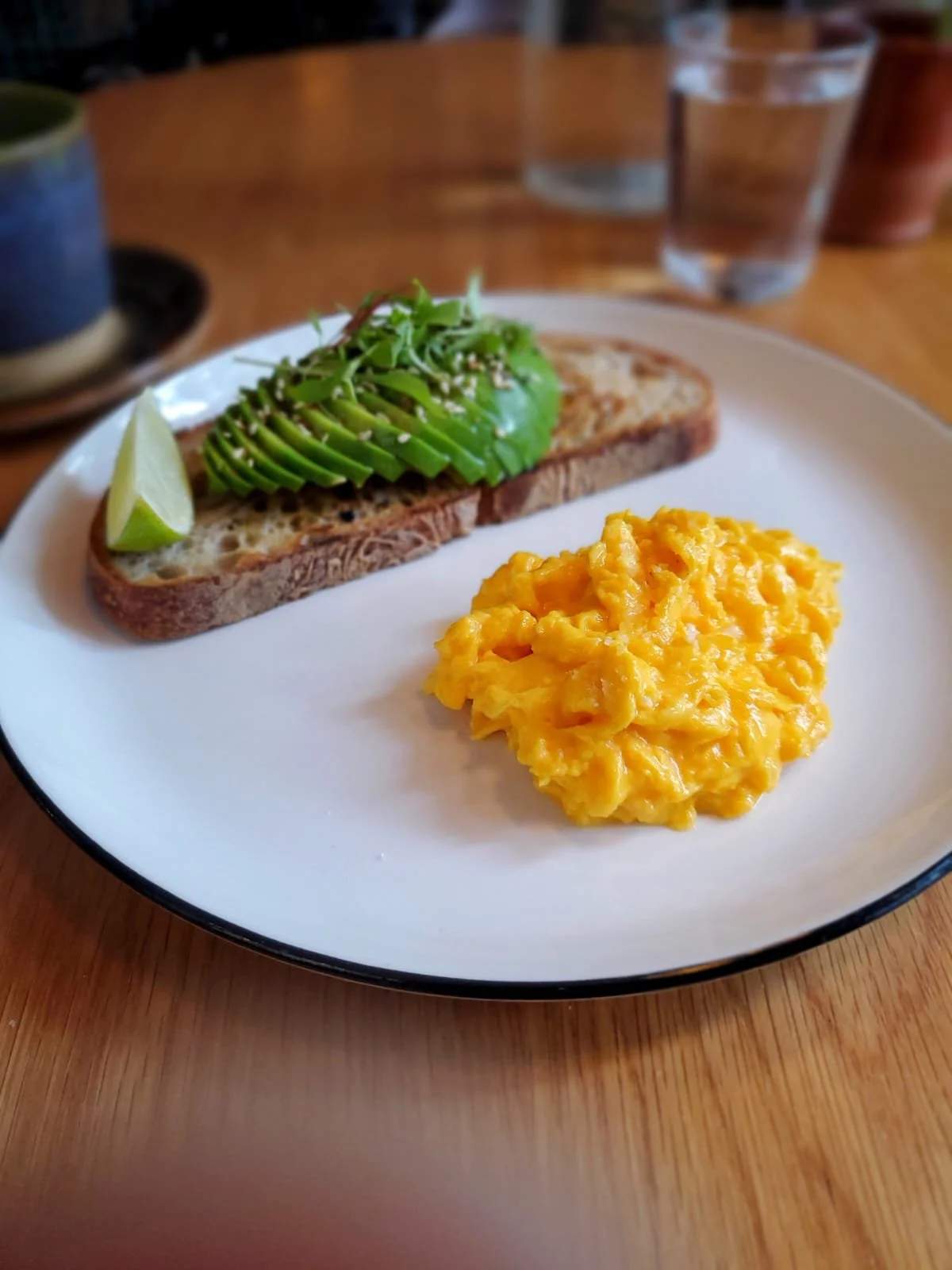Click here to read the previous post, Adjusting to Life in Spain: Exploring the Palacio Neighborhood
Someone asked me the other day how often I eat out, and I replied, “Almost every day, like five, six times a week.”
Their eyes bugged out. “Who are you, Rockefeller??”
I quickly clarified: “Just for a drink usually, maybe a snack, not a three-course meal!”
Being new to this city (well, country) (and continent!) and not knowing anyone, the only way I’m going to A) practice speaking Spanish and B) meet new people is by going out. And food and drink prices are so low, compared to Los Angeles anyway, that having a cerveza (beer), copa de vino (glass of wine) or café (coffee) isn’t going to run me more than €4 in most places. And very often it’s more like €2.50 or €3 (between $2.80-$4.50).
I know that integrating and meeting people in a new country will be hard, so I (the introvert) push myself more than I normally would.
Cafés and Tabernas
When I go out for these aforementioned beverages, I try to chat with the waiter/bartender, even to ask a simple question about something on the menu, just to keep talking as long as possible, like:
¿Me puede recomendar un vino tinto local? (Can you recommend a local red wine?)
¿Tiene cerveza ámbar? (Do you have amber beer?)
¿Qué tan grande es (el plato)? (How big is it/the dish?)
¿Cuál es la diferencia entre tostada de jamón y bocadillo de jamón? (What’s the difference between tostada de jamón and bocadillo de jamón? – which I should have known because tostada is toast and bocadillo is sandwich, but on the picture they both look like toast!)
¿Estás saliendo con alguien? (Are you going out with anyone?) Kidding. I don’t ask that. But there was one smart, friendly and cute bartender that I might’ve flirted with if I didn’t sound like a 10-year-old when speaking Spanish.
Trying to get a waiter's attention.
The, shall we call it, slight barrier is that quite often the waitstaff aren’t overly friendly. Unlike the average American and Canadian waiter, they don’t show up at your table and immediately try to chat you up and ask about your day and laugh uproariously at anything remotely funny that you say.
Plus, they rarely check up on you once they’ve delivered your food or drink. In fact, sometimes trying to get their attention to pay for your meal can be hilariously difficult. One time I kept raising my hand like a school kid whenever the waiter was within 20 feet (6 meters), until he finally came over after the fifth or sixth time.
When I say “aren’t overly friendly,” by the way, I don’t mean to imply that Spaniards are not friendly at all. I simply mean in this context. And the reason, as far as I can tell, is that they don’t work on tips here, so they don’t need to put on a good “show” to ensure that they get a generous tip, like they do in the States.
But the fruits of my labor are starting to pay off!
A waitress in a café that makes my favorite drink – a café bombon, which is like a 4 oz (120 mL) cup of heaven! – now greets me with a smile and asks me how it’s going or if I want my usual.
A café bombon, mmm....
And a bartender at my local taberna (pub) finally introduced himself and asked for my name after weeks of bombarding him with every question I could think of about all the artisanal beers they served (probably so he could file a restraining order with the cops). In any case, he now greets me by name when I walk in and we usually chat while he pours my drink and prepares a little free tapa for me.
These little free tapas, by the way, are served by pretty much every bar/pub/restaurant/café when you order an alcoholic drink. Usually it’s a dish of olives or potato chips, but sometimes you’ll get a simple, mini sandwich or, in the case above, a small plate of olives, chips and cheese.
Each time I go, I ask the bartender for a recommendation, and this is probably my favorite beer: Kwak, a delicious Belgian amber ale served in a very specific glass. In fact, no sooner had it been delivered to me, when the couple two tables over smiled and said, “Enjoy the Kwak!” Which kind of sounds like an alcoholic Jedi salute.
Kwak, a cerveza ámbar (amber beer) in a science lab receptacle!
By the way, the reason for the odd-shaped beer glass is interesting. In the 18th century, when a horse and carriage would pull up to an inn, the passengers would get out to have food and drink, but the coachmen weren’t allowed to leave the hansom unattended. So Pauwel Kwak, a brewer and innkeeper, created a special glass that could be hung on the outside of the carriage, making it easy to drink without dismounting. And now this distinctive glass (with wooden stand) has become a hallmark of the Kwak brand.
A couple days after I’ve moved in to my new apartment, I’m meandering through the narrow cobblestone streets in my neighborhood and come across a cute little café tucked away on one side of a plazita (little plaza). In most places (except more formal restaurants), the custom is to just sit down at a table, inside or outside, and then magically a waiter appears to take your order or give you a menu.
The best matcha latte in Madrid!
To my utter delight, I see that they serve matcha lattes. Anyone who knows me will nod their head at this point and think Oh great, here goes the matcha addict….
I’m sooo excited (for the matcha, but also still that I am living in friggin’ Spain!!!) that I smile and order en español and say por favor and gracias with every sentence – and I do not receive even a hint of friendliness in return from the waitress. She isn’t rude or grouchy, just insistently neutral. Since I know I’ll be frequenting this place regularly (they make the best matcha latte I’ve had in Madrid), I decide that I will not let that bother me. I will continue to be my good-natured self and by god I’ll wear her down with friendliness until she cracks a smile.
And by the way, I’m not the kind of person who insists that everyone I come into contact with should smile for me. In fact, I HATE when men (because, unfortunately, it’s always men who do this) say to me on the street or in a coffee shop, “Smile! You’d look so much more beautiful if you smiled!” But in this case, I guess I just want to get past the surface non-friendliness – at least in the hospitality industry and/or the big city – and get to the renowned warm and social nature of a Spaniard. And, not to toot my own horn, but everyone who meets me says how smiley and friendly I am (except the guys on the street forcing me to smile), so it’s not like I’m expecting others to be what I myself am not. Anyhoo….
For two months I go to this café a few times a week. A waiter and another waitress are always friendly and smile when I say hello or tell them how delicious the food is.
Tostada aguacate y huevos revueltos (avocado toast and scrambled eggs), mmm
But this other waitress – nada. I begin to wonder if I am somehow coming across as unfriendly or like a weird tourist. Maybe my Spanish is worse than I thought. Maybe I’ve accidentally said a bad word to her.
Linguistic Side bar
I’ve discovered, much to my horror-slash-delight, many “false friends,” which are words in one language that look/sound like a word in another language, but are not. For example:
Molestar = annoy in Spanish
“Molest” = molest, or abuse in English
A Spanish speaker was telling me in English how a cow chased him after he had been “molesting” it when he was a kid. I quickly pointed out the difference. “I hope you mean you were annoying the cow!”
Embarazado = pregnant in Spanish
“Embarrassed” = embarrassed in English
I once said to a Spaniard with a defeated sigh, “Oh dios, estoy tan embarazada.” (“Oh god, I’m so pregnant.”)
There are also words in Spanish that I mix up for other words in Spanish, but do not mean the same thing at all. For example:
Fallar (to fail) vs. follar (to fuck)
Cola (line, queue) vs. culo (ass)
Coser (to sew) vs. cocer (to cook)
Votar (to vote) vs. botar (to throw away)
Casar (to marry) vs. cazar (to hunt)
And there are words that mean one thing in Castilian Spanish (Spain Spanish) and another in Latin American Spanish (which is what you learn in Canada and the States). One example:
Coger = to take or grab in Spain but to fuck in Mexico (You’ll get a mighty funny look if you ask your friend to “coge el libro” — “grab the book” in Spain, but…well, you get the idea.)
Back to the Café
So one day I finish my delicious matcha latte and when this waitress comes to take my empty cup, I say a little more than I usually do: “Gracias, estaba delicioso. Es el mejor matcha latte de toda la ciudad.” (“Thank you, that was delicious. This is the best matcha latte in the whole city.”)
And to my surprise, her face lights up with a smile and she thanks me profusely and says it makes her very happy to hear that. I grin back, feeling like I have just scaled Mount Everest, pay my bill and leave, saying my usual, “Hasta luego!” (“See you later!”)
A couple days later, I’m back again. I sit at a table and pull out my book. Five minutes later, I look up as she approaches, ready to give my order – but she’s already got my matcha latte! She sets it down and I thank her. She smiles as she walks away. The time after that, when I go to pay for my matcha latte and a cookie, she rings it up and says, “La galleta te invito.” (“The cookie’s my treat.”) Surprised, I say, “Oh wow, gracias, eres muy amable!” (“Oh wow, thank you, you’re very kind!”) and she responds with a smile, “Tambien tú.” (“So are you.”)
Now I’m here again today, a few days later, and order lunch. Halfway through, the waiter comes to my table with a cookie on a small plate and says that this is from that waitress, on the house. Wow. Later, when I go to the counter to pay, I thank her and say that that is so incredibly kind of her and, once again, she says that I, too, am very kind. Her lovely smile and generous attitude make me feel so good, I want to continue talking to her in Spanish.
At that moment, the waiter shows up at the counter, and next thing I know the three of us are chatting. I’m pretty decent at ordering and that kind of thing, but whenever I get into a conversation, I’m always nervously waiting for that moment where I no longer understand, or I don’t have the words to make the other person understand me. In this case, that never happens. I’m just talking to these two like a normal Spanish speaker.
I discover that we are all expats (she’s South American, he’s Scottish, I’m Canadian) and we talk about the adventure of traveling and living in new places and why we moved to Spain. We mention that many of our family and friends think we’re a bit strange/courageous/a black sheep. And the waiter and I share a few challenges of learning Spanish (he’s been in Spain for a few years, but to my ears he speaks perfectly).
When I finally leave the café, I have the biggest smile on my face and a bounce to my step. It feels so good to finally be meeting people. I don’t know if these two will become actual friends or anything like that, but I do know that the next time I go back, I’m sure to have longer interactions than “I’ll be paying with a card” or “What time do you close?”
More about where I meet new people in Madrid in the next post…
Click here to read the next post, Adjusting to Life in Spain: How I Meet New People (Language Exchange)
Note: All photos taken or created (using DALL-E) by Selena Templeton, unless otherwise noted.
If you enjoyed reading this travel blog, check out some of my other adventures:








